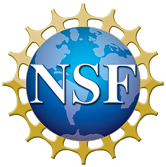CiSE-ProS: Cyberinfrastructure Security Education for Professionals and Students
Our Mission Statement
To adopt well-established teaching and learning practices to provide in-person and online training avenues for practitioners to develop core competencies in secure computing relevant to advanced cyberinfrastructure (CI). There is a need to develop programs that prepare CI-professionals and open the gates for new workers in the field.

Our Purpose
A spate of intrusions at advanced cyberinfrastructure sites across the nation demonstrates the urgent need to train system administrators in securing data and computational resources. The rapidly evolving nature of the cybersecurity landscape requires CI professionals to be prepared to address current threats, while simultaneously identifying and mitigating new threats. The Cyberinfrastructure Security and Education for Professionals and Students (CiSE-ProS) training program will build core competencies in secure-computing using hands-on activities. The project leverages competencies in an academic-public-private collaboration to determine certification standards in CI cybersecurity training.
The CiSE-ProS program will:
- Train the current CI workforce to secure data and computational resources using on-site and continuing education programs
- Prepare undergraduate and graduate students for productive cybersecurity careers.
Our Goals
- Increase awareness of cybersecurity issues in research computing via a seminar series
- Prepare learning outcomes that describe standards for CI professionals prepared to address cybersecurity threats
- Design activities through which preparedness with respect to the standards can be evaluated
- Design scoring schemes to evaluate performance on the evaluation activities
- Develop learning activities, including virtual reality modules, to develop learners with respect to the learning outcome standards
Acknowledgements
We gratefully acknowledge support from the National Science Foundation and the following Texas A&M University facilities: Laboratory for Molecular Simulation, College of Architecture Visualization Laboratory, Engineering Experiment Station, Engineering Extension Service, Sketch Recognition Lab, Cybersecurity Center, and Soft Interaction Lab.
This project is supported by NSF CIP-1730695.
